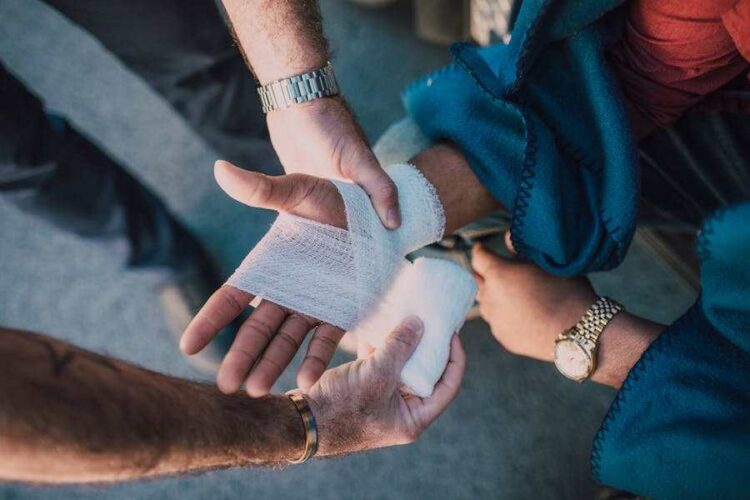Imagine yourself enjoying a leisurely stroll through a scenic park, or running errands on a well-maintained sidewalk. Public places are supposed to be safe havens. Spaces designed for community events, recreation, and simply getting from point A to point B. Government buildings, parks, and sidewalks are constructed with the expectation of constant public use. Accidents can happen anywhere, and when they occur on public property, the aftermath can be more than just physically jarring. Suddenly, you’re faced with an injury, unexpected medical bills, and the confusing legal landscape of navigating a claim against a government entity.
Understanding your rights and navigating the legalities involved in a public property injury case can feel overwhelming. If you sustain a personal injury in a public place or on government property, an injury law firm can be your trusted guide in pursuing fair compensation. By understanding your rights, taking the necessary steps to document your injury, and seeking legal counsel from an experienced attorney, you can navigate this challenging situation and work towards securing a fair outcome.
Navigating The Legal Landscape Of Public Property Injuries
Navigating the legal aftermath of a public property injury can be a confusing labyrinth compared to a typical slip and fall on private property. While private property owners are generally held responsible for maintaining a reasonably safe environment for visitors, the concept of sovereign immunity throws a wrench into things when dealing with government-owned property. Sovereign immunity is a legal doctrine that acts as a shield, protecting the government from certain lawsuits. There are exceptions that allow injured individuals to pursue claims against public entities under specific circumstances.
Understanding these exceptions is crucial in a public property injury case. Premises liability, a legal principle that applies to both public and private property owners, plays a role here as well. It states that the owner has a duty to maintain their property in a reasonably safe condition and warn visitors of any hazards. In the context of public property, this could involve keeping sidewalks free of cracks and uneven surfaces, ensuring proper lighting in walkways and parking lots, and maintaining public buildings in a safe and functional condition. For example, a broken sidewalk the government has neglected to repair, a malfunctioning handrail on a public staircase, or inadequate lighting in a government parking lot that contributes to your fall could all be grounds for a claim.
Unlike a private property owner, the government can’t be sued simply because someone gets hurt on their property. This is where the exceptions to sovereign immunity come in. These exceptions are loopholes that allow lawsuits against government entities in specific situations. A common exception is negligent maintenance. If the government entity fails to uphold its duty to maintain public property in a reasonably safe condition and this failure leads to your injury, a lawsuit may be possible.
Another exception deals with intentional acts. The government can’t hide behind sovereign immunity if its employees intentionally cause harm or act with reckless disregard for public safety. For instance, an assault by a security guard on government property could be a basis for a lawsuit.
It’s important to understand the strict time limits and specific procedures for filing a claim against a government entity. These notice requirements mandate that you notify the government agency within a specific timeframe of your injury and the intent to file a lawsuit. Missing this deadline could jeopardize your ability to pursue compensation altogether. The complexities of public property injury cases highlight the importance of seeking legal counsel from an attorney experienced in navigating these legal nuances.
Building A Strong Case With An Injury Law Firm
An attorney can guide you through the legal process, investigate the circumstances of your accident, and advise you of your rights under the specific laws of your state.
Here’s how an injury law firm can assist you in a public property injury case:
Investigating the Accident: An attorney will conduct a thorough investigation to determine the cause of your accident and identify the responsible party. This may involve collecting evidence from the scene, reviewing government maintenance records, and interviewing any witnesses.
Understanding Notice Requirements: An injury law firm well-versed in public property claims can ensure you comply with all notice deadlines and filing procedures. Missing these deadlines can significantly impact your ability to pursue compensation.
Negotiating with Insurance Companies: Government entities typically carry insurance to cover liability claims. An attorney can handle negotiations with the government’s insurance company to ensure you receive a fair settlement that reflects the full extent of your damages.
Litigating Your Case: If a fair settlement cannot be reached through negotiations, your attorney will be prepared to represent you in court. They will present the evidence gathered during the investigation and argue for fair compensation for your losses.
Reclaiming Control After A Public Property Injury: The Road To Recovery
Sustaining an injury in a public place can be a physically, emotionally, and financially devastating experience. The initial shock of the accident can quickly morph into a whirlwind of medical appointments, mounting bills, and the daunting task of navigating a complex legal landscape. Public property injury claims differ from typical slip and fall cases, presenting challenges due to the concept of sovereign immunity. Understanding your rights and taking proactive steps can empower you to regain control of the situation and seek compensation.
Here’s how you can transform this setback into a path toward recovery:
Document Everything: Following a public property injury, immediately gather as much evidence as possible. Take pictures of the scene of the accident from multiple angles, capturing the hazardous condition that led to your fall or accident. Take pictures of your injuries to document their initial severity. Collect contact information from any witnesses present at the scene and request their written statements describing what they observed.
Seek Medical Attention Promptly: Your health and well-being are the paramount concern. Don’t hesitate to seek medical attention immediately after the accident, regardless of how minor your injuries seem. Early medical evaluation establishes a clear record of your condition, linking it directly to the public property accident. This documentation becomes evidence when building your case. Retain all medical records, bills, and receipts related to your treatment, as these documents will be used to help calculate compensation.
Report the Incident: Report the accident to a government official or employee on-site. Document the date, time, and location of the report, as well as the name and contact information of the person you spoke with. This official report serves as initial acknowledgement of the incident by the responsible government entity.
Consult with an Injury Law Firm: The complexities inherent in public property injury cases underscore the importance of seeking legal counsel from an injury law firm experienced in handling these types of claims. An attorney can advise you of your rights under the specific laws of your state, investigate the circumstances of your accident, and guide you through the legal process.
By following these steps and partnering with an experienced attorney, you can increase your chances of a successful outcome in your public property injury case. Government entities have a responsibility to maintain safe public spaces. If their negligence resulted in your injury, you have the right to seek fair compensation for your medical expenses, lost wages, and pain and suffering. Don’t let the complexities of a public property injury claim prevent you from seeking justice and financial security.










